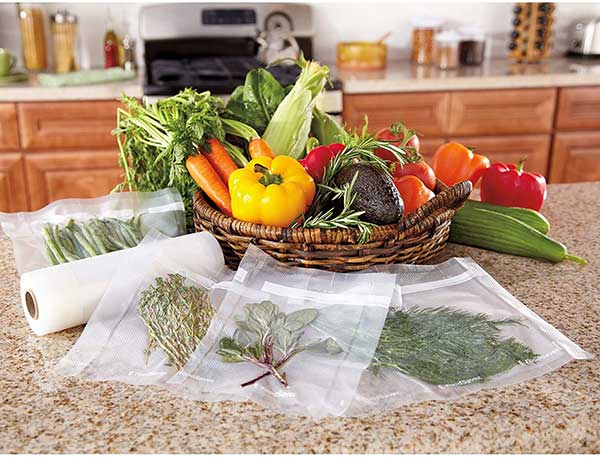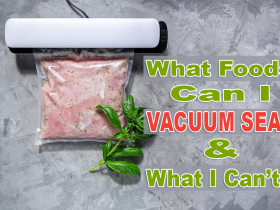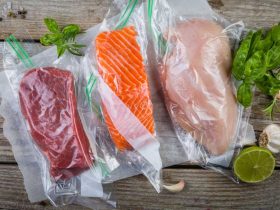Vacuum sealing has become the gold standard in the field of food preservation.
If you’re having a small party and leftover is one of its unattractive attractions, then you’d turn to vacuum sealing! Not enough space in your freezer for a few days and need to save some food outside; vacuum sealing is your guy.
Need to plan and organize food likewise, vacuum seal some of them to last till you need them again. I could go on all day on how many amazing things you can accomplish with vacuum sealing machines by spending a few bucks but is that all there is to vacuum sealing? You must have wondered things like how long does the vacuum-sealed food last! Well, we share your concern. Read the advantages of using a vacuum sealer here.
To tell you the truth vacuum sealing is not a godsend there are pretty heavy risks involved in this too. Vacuum sealers create what we know as space –on a more official note, reduced oxygen packing. It creates an environment where oxygen is nearly zero. In this anaerobic environment growth of most bacteria are fungi are prevented. Hence the safety of your food is ensured. To know more about its effectiveness visit here.
But what you may not be aware of is about the anaerobic bacteria. These are the kind that will thrive in a low oxygen atmosphere. Most common is known as –
Botulism and Listeria Monocytogenes
These bacteria will get into your air deprived sandwiches and grow even faster as there’s an apparent absence of oxygen. What’s scarier is that you wouldn’t even know if there were infested because ironically the change that these bacteria are mostly invisible. They don’t taste different, don’t look anything’s happened, so invisible. Only a very little amount of these anaerobic substances will take you down.
Plastic Poisoning
What nobody notices about vacuum sealing is the invisible part – the plastic. It’s there silently poisoning your food with toxicity. You’re thinking your food will stay fresh way long, but in reality, the plastic is taking time mingling with your food. Problems from taking food that is wrapped in plastic can range from infertility to cancer even.
What the professionals are wariest of is a chemical substance named Bisphenol A (BPA), found primarily in plastic manufactures in bounds. In the food preservation turf, plastic bottles or freezer bags are known to contain some of it. If your food is microwaved touching cling film, chances are they are contaminated with Bisphenol-A.
Bisphenol A is an endocrine disrupter. What’s that? It will mess up your hormone system and affect you as the hormone you’ve heard of as estrogen. This is how BPA may cause fertility issues.
The good news about plastic poisoning is that BPA poisoning is far more likely to affect you if your plastic bag is being used over and over again. So keep it new to keep it fresh and you’ll be okay.
Other Dangers of Vacuum Sealed Food
Some of the dangers are listed below –
- When you cook the vacuum-sealed food or ferment it, the spore formers can stay alive even though the majority of the vegetative cells may not.
- When you’re considering sous vide packaging or determined to use cook-chill, low PH or AW are not viable options
- You cannot properly determine any temperature disassociation from an altered state of your food because in vacuum state there is none.
- In vacuum sealed state, you really cannot tell whether there’s been a case of temperature abuse because you cannot check it first-hand.
- Bacteria, the most dangerous ones, can originate from both oxygen-less an oxygen-enriched environment.
- If there are any category of bacteria that needs time to grow properly a vacuum-sealed plastic bag is a buffet for it/them.
- You cannot treat vacuum-sealed food as an alternative to proper refrigeration or canning. In the perishable foods, vacuuming without necessary temperature control will result in food contamination.
So the question remains, how long the vacuum-sealed food lasts? It’s been said that if you keep your food above 40 degrees more than 2 hours straight then you may be at risk of food contamination no matter if they are vacuum sealed or not. Well, don’t freak out just yet! We’re here to help. Follow the instruction below to guarantee your food safety concerning vacuum-sealed food.
Read this ultimate maintenance guide of your vacuum sealer before your proceed to choose one.
But before we proceed, let me know you that the Automatic Vacuum Air Sealing System For Food Preservation by NutriChef comes with incredible versatility that you will find at a reasonable price. You will get unparalleled preservation for your foods, utmost ease of use, simple maintenance task and economic application all the way. The overall framework combining useful features induces a perfection to suit your kitchen for sure.
To know more visit here.
What to Do and What Not to Do
- Above all, keep your heat seal clean, this is the most common infectious part of your sealed bag.
- Touch your foods as less as possible, use spoons and such.
- Keep your kitchen as clean as possible – the counter, the cutting boards all pieces of equipment.
- Keep records of your foods, write down dates and other necessary notes to keep track plastic uses.
- Be careful about the low acid foods. They require your care the most – you must consume them as soon as you reheat them.
- Dry foods are not priority one freezer food, but if it’s moist like meat or fish, please don’t keep them outside.
If you have further question, feel free to visit the FAQ section.







Leave a Reply